The Serra das Confusões National Park is a fascinating destination for nature and adventure lovers.
Located in the state of Piauí in Brazil, it is the largest national park in the Northeast and offers a rich diversity of landscapes, fauna and flora, as well as impressive rock formations.

Still wild, the Serra das Confusões National Park was created in 1998 to protect an area of 502,411 hectares, home to little-known prehistoric sites scattered among rocks and patches of caatinga.
Animals such as the giant anteater, the puma and the jaguar coexist here, as well as the largest bat in the Americas, the Vampyrum spectrum, which has a wingspan of up to 1 metre.
The Cave of the Bois Stream, a 3 kilometre long crevice, is the attraction of the park, which has no facilities for visitors.
The most accessible, where you can go by small car and others on foot, are the Cores da Caatinga trail, Mirante Janelas do Sertão, Gruta Riacho do Boi and Olho d’água Escondido.
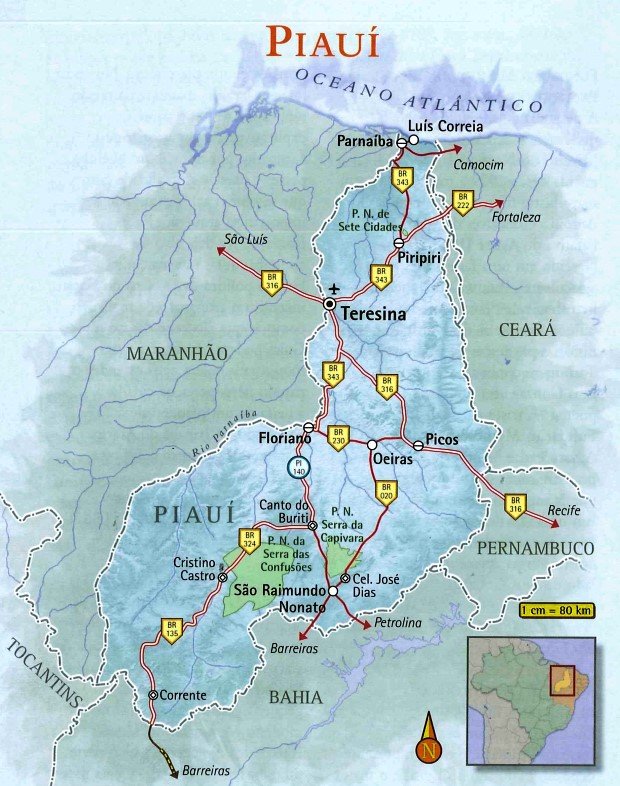
Video about Serra das Confusões National Park
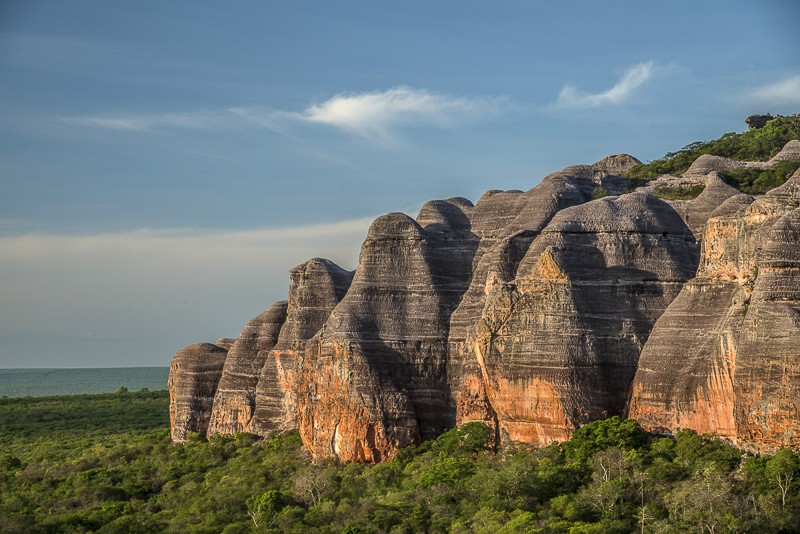
Parque Nacional da Serra das Confusões PI
Serra das Confusões National Park
1. Main attractions
- Rock Formations: The park is known for its unique rock formations, which include large boulders formed by erosion over millions of years. Some of these formations resemble human and animal figures, contributing to the name “Serra das Confusões”.
- Viewpoints: There are several viewpoints in the park where visitors can admire the vastness of the landscape and enjoy spectacular panoramic views.
- Trails and Walks: There are several trails that criss-cross the park, taking visitors to caves, cave paintings and nature reserves.
- Fauna and Flora: The park is home to a rich biodiversity, with several species of animals, including jaguars, anteaters and various birds. The vegetation is typical of the Caatinga biome, with cacti, thorn trees and other species adapted to the semi-arid climate.
2. Park Activities
- Ecotourism: The park is ideal for ecotourism activities such as trekking, bird watching and nature photography.
- Guided Visits: It is advisable to hire a local guide as they know the trails well and can provide valuable information about the park’s history, geography and biodiversity.
- Archeological Exploration: The park has several caves with rock inscriptions and archaeological sites dating back thousands of years.
3. Main tourist attractions
1. Colours of the Caatinga Trail
Before you start “sightseeing” here, prepare your bottle with plenty of water. You’ll need it! On the Cores da Caatinga trail, you can already feel the strong sun characteristic of this Brazilian biome.

This well-marked trail takes you through the most varied types of vegetation and fauna of the Caatinga. As the name suggests, it’s all about the colours of the Caatinga.
2. Janela dos Sertões viewpoint
As you walk along the paths, you will notice that the rocks change colour depending on the temperature, creating a certain “confusion” in the view. Hence the name Serra das Confusões.

All this is best seen from the Janelas dos Sertões viewpoint. To reach it is to face a colourful expanse that takes your breath away. It’s also where you get a sense of the grandeur of the park. It really is the window that opens your eyes to the hinterland.
3. Riacho do Boi Cave
Inside the park there is a sort of tarmac road that you can drive along to a certain point. From here you can walk along a path to the Riacho do Boi cave.
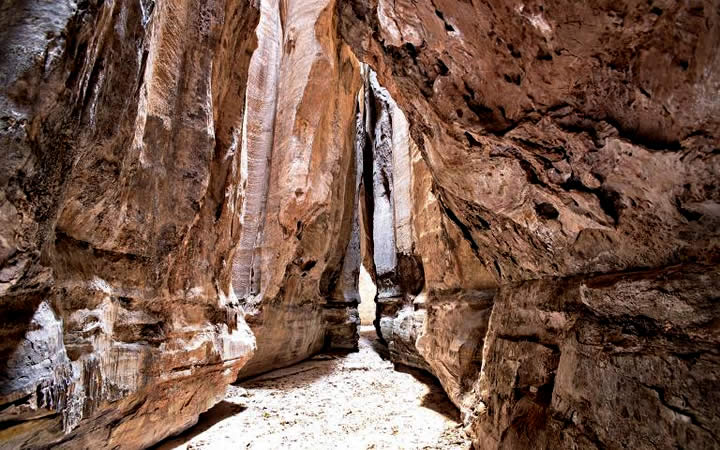
To get to the paths inside the cave, you have to go down a 1.5 metre high shaft. There is a wooden ladder to make the descent easier.
Once you’ve reached the bottom, all you have to do is enjoy the cave, which is almost a canyon, 1 km long, with impressive stone walls over 20 metres high, shadows, fresh air, gardens, humidity and tall vegetation.
When you arrive here, it’s as if you’re in a different region.
4. Baixão das Andorinhas
The Baixão das Andorinhas is a beautiful trail with an adapted structure for people with walking difficulties. At the end of the trail, you can watch a beautiful sunset and enjoy the spectacle of nature in the interior of Piauí.
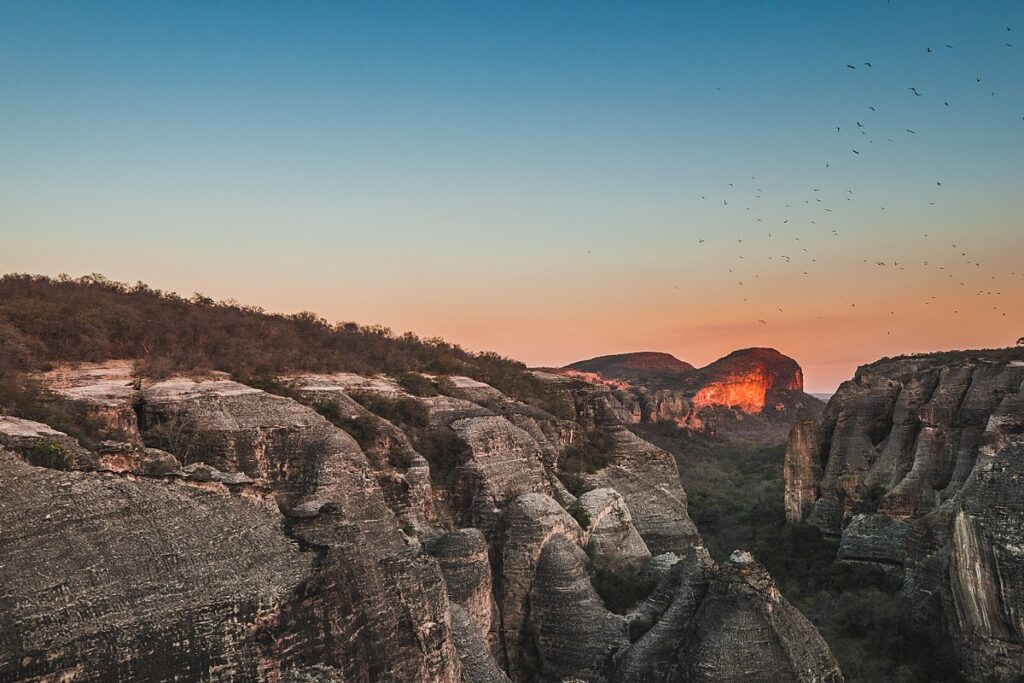
It’s worth noting that in addition to the sunset, visitors can also observe another natural phenomenon in the area. Every day, at around 5.30pm, several swallows fly towards the ravines in the area. This beautiful phenomenon can be seen from the Baixão Variant.
5. Window of Ventania
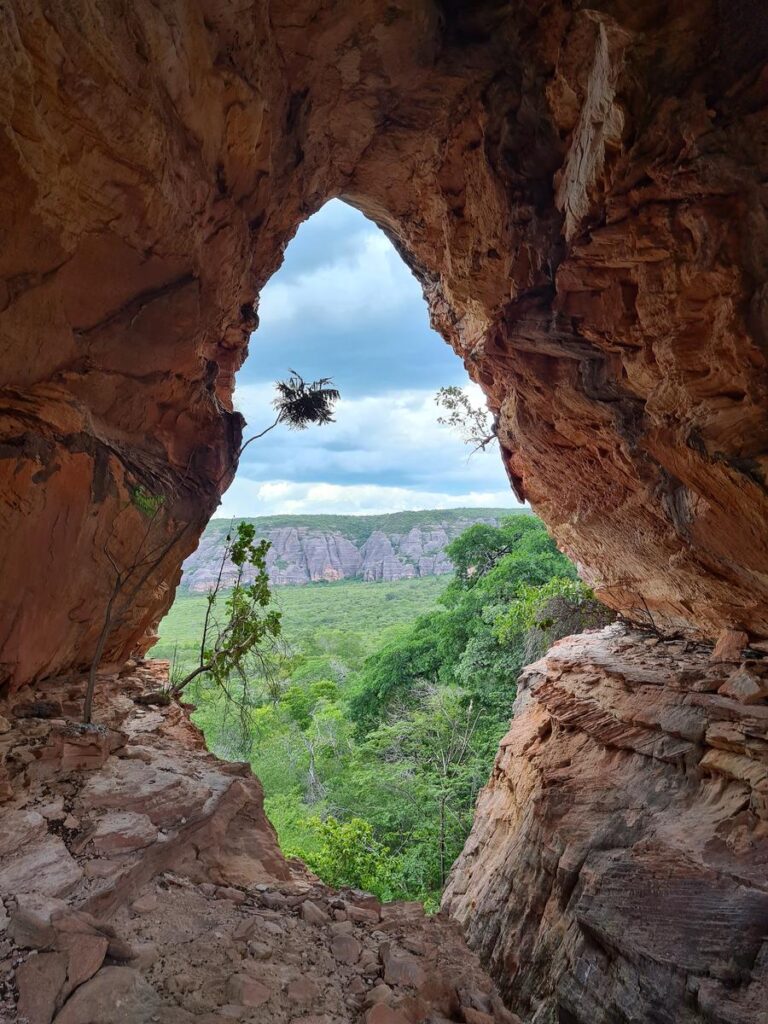
6. Toca do Capim
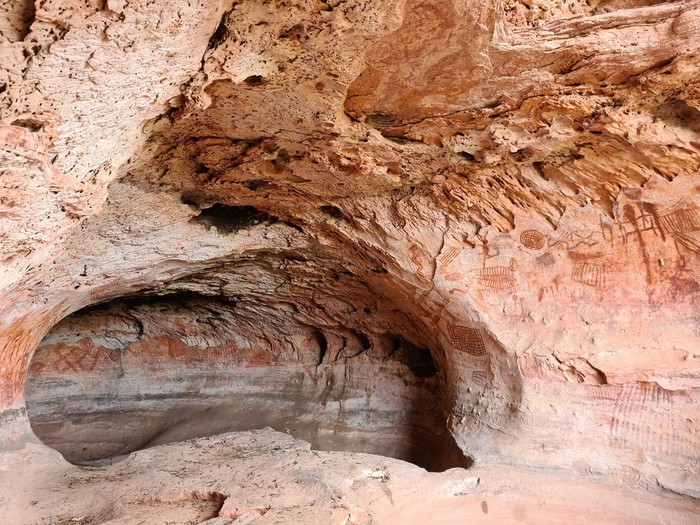
7. Toca do Quixó
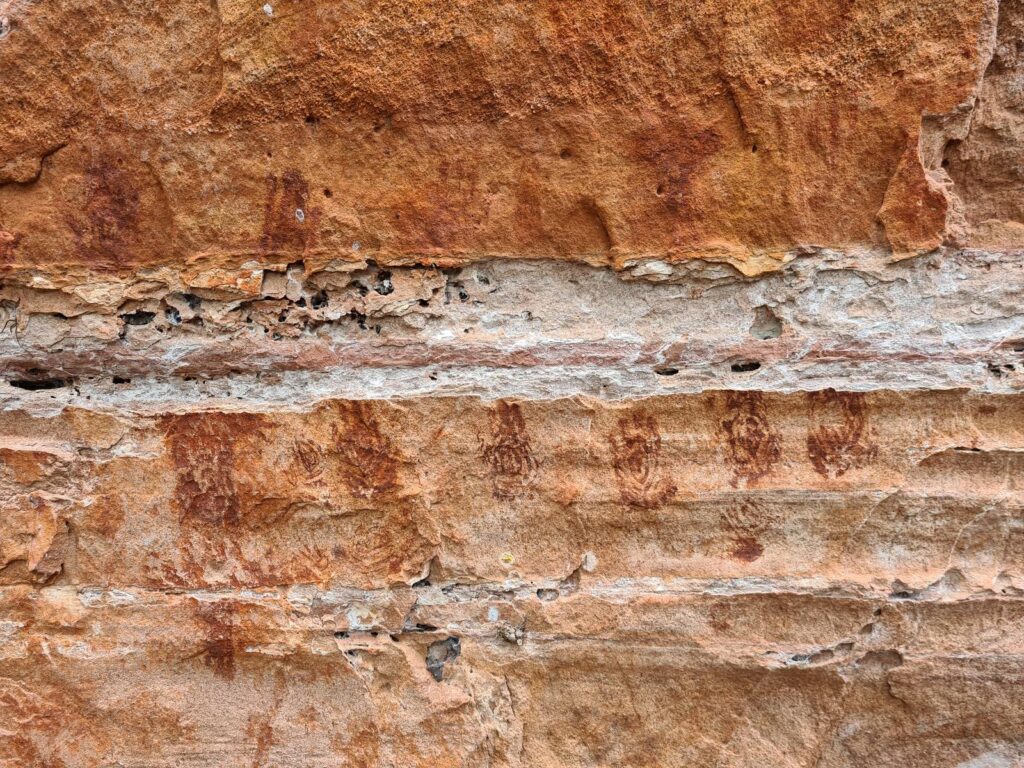
8. Rock art in Toca do Enoque
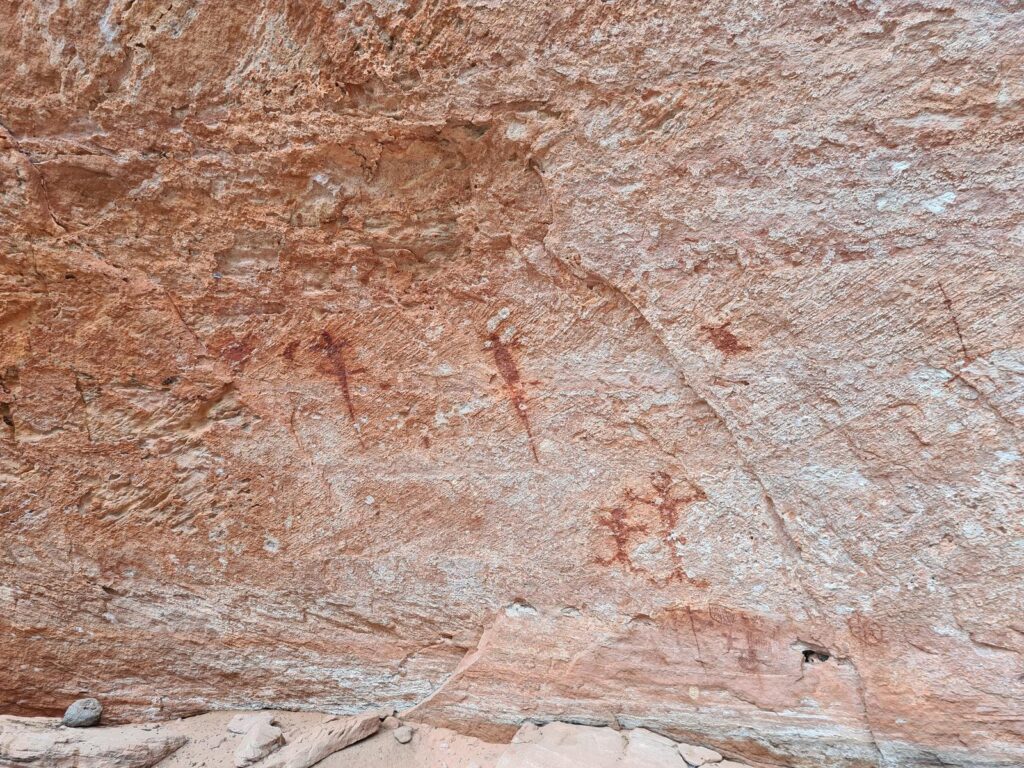
3. Park Infrastructure
- Accommodation: There is no accommodation within the park. Visitors usually stay in guesthouses in nearby towns such as Caracol.
- Food: As the park is a protected area, there are no restaurants inside. It is advisable to bring water and snacks for the walks and to dispose of your own rubbish.
- Permissions: Access to the park is controlled and permits must be obtained from the administration office in Caracol or Guaribas. In some more remote or sensitive areas, an authorised guide may be required.
4. Best time to visit
- The best time to visit the park is during the dry season, from May to September, when temperatures are milder and trails are more accessible.
- Physical preparation: Some trails require good physical preparation due to the rugged terrain and high temperatures.
5. Best time to visit
- The best time to visit the park is during the dry season, from May to September, when temperatures are milder and trails are more accessible.
7. Access and Location
- The park is located in the south of Piauí, near the towns of Caracol, Guaribas and Santa Luz. The main access is through the city of Caracol. The entrance to all these wonders is through the Caracol Gate. It is located 20 kilometres from the town of Caracol, along a dirt road. Caracol is 620 km from Teresina and 80 km from São Raimundo Nonato.
- The journey from Teresina, the capital of Piauí, is about 500 kilometres.
The entrance to all these wonders is through the Caracol Gate. It is located 20 kilometres from the town of Caracol, along a dirt road. Caracol is 620 kilometres from Teresina and 80 kilometres from São Raimundo Nonato.
A visit to the Serra das Confusões National Park is a unique experience that connects visitors with wild nature and Brazil’s ancestral history.
Tourist guide to the Serra das Confusões National Park in Piauí
This post is also on:
![]() Português
Português ![]() English
English ![]() Deutsch
Deutsch ![]() Español
Español ![]() Français
Français



















